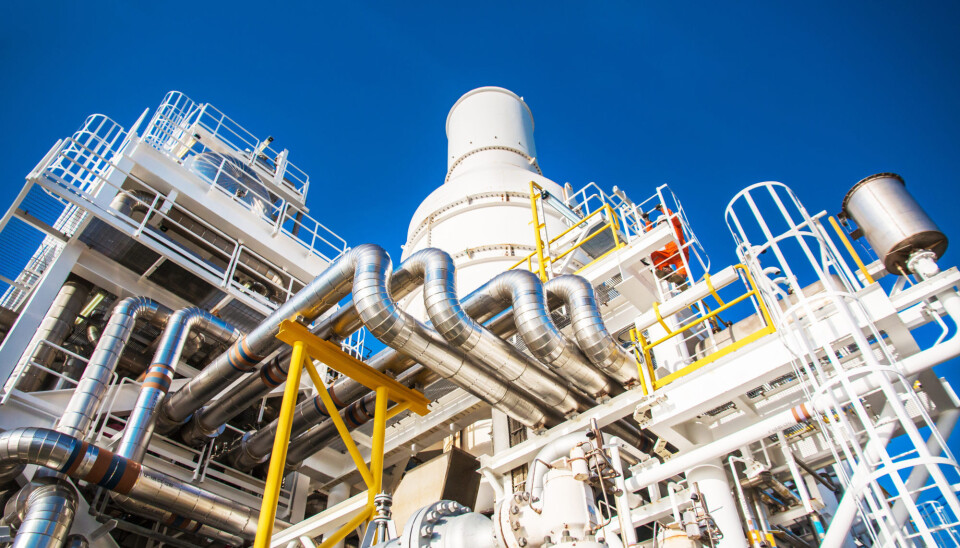THIS ARTICLE/PRESS RELEASE IS PAID FOR AND PRESENTED BY SINTEF - read more

We can electrify offshore oil rigs without electricity cables
Electrification of the Norwegian continental shelf is a long-standing political issue. Now research scientists believe this can be done using fuel cells installed on the platforms. This will reduce CO2 emissions and remove the need to lay new subsea cables.
Research scientists from SINTEF and NTNU are working to develop technologies and concepts to make the oil and gas industry more energy-efficient and reduce emissions from offshore production.
The work is being done in the LowEmission research centre. The aim is to contribute to reducing greenhouse gas emissions from the Norwegian oil and gas industry by 40 per cent by 2030.
One of the topics that the scientists are focusing on is the many gas turbines supplying the platforms with electricity.
“At present, natural gas is burnt in gas turbines to generate electricity for platform operation. This is a well-established technology with many advantages, including low investment costs. However, offshore gas turbines have a low degree of efficiency and produce 84 per cent of the greenhouse gas emissions from the Norwegian shelf. This corresponds to about 11.5 million tonnes of Co2,” says Belma Talic, a SINTEF research scientist.
Hence there is much talk about electrifying the shelf, in other words, laying cables from onshore to supply platforms with clean hydroelectric energy. However, another option that could replace the gas turbines or be used as a supplement is fuel cells.
The technology has existed for several decades and is used today in hydrogen-powered cars, transport vehicles and space vehicles, among other things. It is also well tested and is in practice a miniature power station that uses an electrochemical process to convert hydrogen and oxygen from the air to electricity, water and heat.
“While a gas turbine on the shelf will give us one third of the energy found in natural gas, a fuel cell can provide almost two thirds. Moreover, fuel cells can make use of the energy found in the hydrogen fuel. It is also possible to generate hydrogen locally using surplus electricity from offshore wind turbines,” says Luis Colmenares-Rausseo, a research scientist at SINTEF.
Two promising concepts
In the project 'Fuel cells for zero emission heat and power', research scientists are now investigating the possibility of using fuel cells offshore.
So far there are two different concepts that appear promising for use offshore, according to Talic:
The first is the Proton-Exchange Membrane Fuel Cell (PEMFC), which functions at low temperature (below 100 °C) and requires pure hydrogen as fuel. These are relatively cheap and are currently in use, for example, in hydrogen-powered vehicles from Toyota and Hyundai.
The other fuel cell technology is the Solid Oxide Fuel Cell (SOFC). This functions at temperatures above 500 °C and is less flexible where the energy supply varies because it takes longer to start up and shut down. However, the advantage of this technology is that it does not depend on hydrogen as a fuel, but can also operate using other fuels, such as natural gas and ammonia.
This high-temperature fuel cell is ideal for permanent installations combining heat and energy generation (DHP). In such situations the degree of efficiency can reach 90 per cent. According to the research scientists, this type of fuel cell can also be used reversibly, producing hydrogen electrolytically when a wind turbine is producing surplus energy.
Improving energy use
Colmenares-Rausseo explains that using fuel cells to supply part of the energy needs of a platform has many advantages.
“First of all, fuel cells are modular technology and the size of the system can therefore easily be adjusted, depending on how much energy is needed. They require little space and thus can be used in most locations. Secondly, fuel cells respond rapidly to changes in load – in other words the amount of energy produced. This makes them well suited to balancing varying electricity supply from, for example, offshore wind turbines. Last, but not least, they have a higher degree of efficiency than gas turbines," Colmenares-Rausseo says.
In the LowEmission centre, work is in progress on various assessments of the two technologies mentioned above. The aim is to discover how to provide the optimal conditions for maximising efficiency and lifetime. The scientists are also looking into possibilities for combining these fuel cells with gas turbine operation.
- In the case of the PEMFC, they are investigating how the lifetime of the fuel cell is affected by the operating conditions it will be exposed to aboard an offshore platform, especially under variable load and with minor impurities in the hydrogen gas.
- In the case of SOFC, the scientists are looking at the performance of the cell and how the materials are affected during reversible use. In practice, this means periodic alternation between the fuel cell and electrolysis modes, or in other words between energy generation and hydrogen production.
See more content from SINTEF:
-
Propellers that rotate in opposite directions can be good news for large ships
-
How Svalbard is becoming a living lab for marine restoration
-
New study: Even brand-new apartments in cities can have poor indoor air quality
-
Fresh hope for patients with chronic inflammatory bowel disease
-
Testing a giant ship: May take five kilometres to stop
-
A robot is helping researchers hunt for the best cancer warriors





































